Sorted by date Results 1 - 20 of 20
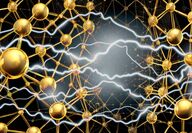
Korean researchers present a high-power sodium-ion battery that can be charged in seconds. Researchers at the Korea Advanced Institute of Science and Technology (KAIST) have developed a high-energy and high-power hybrid sodium-ion battery capable of charging within seconds. Interest in developing batteries based on sodium has taken off due to concerns over the sustainability of lithium, as well as safety concerns due to the combustibility of lithium-ion batteries....

Inlyte Energy's endeavors to bring back sodium-metal-halide batteries. Lithium-ion batteries are today's most common energy storage technology, with uses large and small, ranging from smartphones and other electronic devices to electric cars and stationary. But science is far from resting on this standard – battery efficiency and durability are still in high demand. With sodium easier to source and exponentially cheaper than lithium, a redesigned sodium-metal-halide battery m...

Researchers find way to make crack-free nanocellular graphene to upgrade low-cost sodium-ion energy storage systems. Looking to solve a critical failure during the manufacture of nanocellular graphene, researchers from Tohoku University in Japan have discovered that by using this specialized form of graphene in a dealloying process effectively "heals" the cracks formed during its making. Ever since its discovery in 2004, graphene has been revolutionizing the field of...

A new room-temperature liquid-metal battery of the University of Texas may provide more power than lithium-ion batteries while competing with solid-state batteries for their chance under the hood of the electric vehicle of the future. A report published in the journal Advanced Materials, describes a design which combines the strengths of both solid-state and liquid-state batteries while circumventing several of their disadvantages. This new battery has increased energy...

Researchers at MIT have demonstrated a lithium-ion battery cathode made with organic materials, offering a more sustainable way to power electric vehicles, and Lamborghini is all-in. "I think this material could have a big impact because it works really well," said Mircea Dincă, W.M. Keck Professor of Energy at MIT and senior author of a paper on the findings published in the journal ACS Central Science. "It is already competitive with incumbent technologies, and it can save...
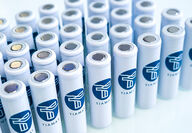
Aluminum-sulfur, iron-phosphate, nickel-hydride, solid-state, redox flow, molten-salt, the growing list of potential alternatives to lithium-ion batteries has exploded onto the scene in the past few years as experts quickly determined a single battery technology could not withstand the torrent of technologies vital to power a future of clean, sustainable energy. One of the most promising contenders is sodium-ion batteries, and with support from automaker giant Stellantis, it...
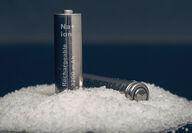
The world's transition away from fossil fuels to sustainable green energy sources is rapidly increasing the demand for economical storage methods that has thus far centered on lithium-ion batteries. The limited availability in the West of lithium and other critical metals, such as cobalt and rare earth elements, raises significant concern about the sustainability of the lithium-ion technology. One potential alternative may be the sodium-ion battery. According to the European...

As 2024 gets underway, the direction of rechargeable battery design continues to have major implications for the mining industry. A range of renewable power technologies are under development and expansion across the globe to replace fossil fuels. These advancements and the continued electric vehicle push driving the need for increased energy storage capacity, continue to add to the world's energy transition minerals shopping list. The numbers are already in – the new mines n...

Each year in Canada, roughly 200 active mines contribute to billions of tons of mining waste. The estimated number of tailing storage facilities surveyed worldwide is over 12,000. While considered industrial waste, these facilities also contain a number of useful minerals at a concentration deemed too low to be worth extracting-until now. Enter biomining, which covers several biological separation technologies offering eco-friendly recovery of valuable and strategic materials...

May be the tech for unifying green energy future and the not-so-often green methods of producing lithium. Researchers at Princeton have developed a surprisingly efficient and environmentally friendly method of extracting lithium from brines and seawater using specialized string. While technologies such as direct extraction from lithium-rich geothermal waters is shaping up to be a way to produce the silvery-white critical mineral necessary for rechargeable batteries without...

Vanadium, which is in high demand today for its ability to strengthen steel alloys – specifically for manufacturing high-strength, low alloy rebar used in earthquake-resistant construction around the globe, as well as automotive, aerospace and military applications – is gradually gaining ground in the renewable energy sector. The hard, silvery-gray metal is the 22nd most abundant element in the Earth's crust, though it is rarely found naturally in its metallic form. Ins...

While not quite as easy as whipping up a science experiment in the kitchen, a research group from the Osaka Metropolitan University Graduate School of Engineering has developed an inexpensive and eco-friendly way to condense various rare earth elements (REEs) from natural water sources using common, food-safe ingredients. The research group, led by Professor Masayuki Azuma and Associate Professor Yoshihiro Ojima, have successfully tested an adsorbent material using dry...

Seeking an affordable and safer alternative to lithium-ion batteries for the storage of intermittent clean energy from wind and solar, a global team of researchers led by an award-winning chemist at the Massachusetts Institute of Technology has developed a new rechargeable battery made with affordable and readily available materials – aluminum, sulfur, and molten salts. "I wanted to invent something that was better, much better, than lithium-ion batteries for small-scale s...
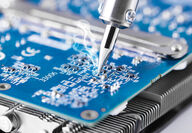
From flashlights to supercomputers, tin is the glue for an electronic age Lost in the clamor for lithium, nickel and other metals needed for the batteries powering electric vehicles and modern electronics, or the rare earth elements that turn stored energy into motion, is the enormous need for a much more modest metal that is so fundamental to the advancement of technology that it almost goes unseen – tin. While other technology metals are critical to certain products and s...

Researchers from the Pacific Northwest National Laboratory and University of Washington have dicovered a simple way to extract what could be considered one of the most critical minerals to the United States and European Union, magnesium. Since ancient times, Mankind has extracted salts from the ocean. While table salt is the easiest to obtain, seawater is a rich source of different minerals, and scientists have long been exploring the possibility of isolating specific...

MIT develops a wearable sensor able to target any biomarker Using a gold-gallium "band-aid" could prove the next generation of biological monitoring as researchers from the Massachusetts Institute of Technology have devised a new kind of wearable sensor capable of communicating wirelessly without the need for microchips or even batteries. Wearable sensors are ubiquitous due to wireless technology, which enables the monitoring of glucose concentrations, blood pressure, heart...

Global mining and metals company Rio Tinto has entered into a strategic partnership that includes a roughly US$10 million (C$12.5 million) investment in Nano One Materials Corp., a British Columbia-based company that has developed a technology equivalent to the "Instant Pot" of lithium battery cathode materials. While there has been a lot of buzz about the hundreds of factories being constructed around the globe to manufacture the lithium batteries needed for the electric...
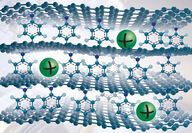
Researchers from Chalmers University of Technology in Sweden have recently devised a method of using a novel form of the wonder material graphene in sodium-ion batteries, increasing their sustainability and capability, tenfold. Much like today's lithium-ion, sodium-ion batteries function by generating power by shuttling ions between a pair of electrodes in a liquid electrolyte, yet their performance has always left something to be desired. Part of their limitation is due to...

With the goal of producing 58,000 metric tons of the lithium carbonate needed for the batteries powering electric vehicles and storing renewable energy each year, global miner Rio Tinto has committed US$2.4 billion to the development of Jadar in Serbia, one of the world's largest greenfield lithium projects. "Serbia and Rio Tinto will be well-positioned to capture the opportunity offered by rising demand for lithium, driven by the global energy transition and the project will...

Lithium battery manufacturer Northvolt has partnered up with an unlikely collaborator, Swedish startup Cinis Fertilizer, signing an offtake agreement for sodium sulfate salt to be recovered from battery manufacturing processes and repurposed for commercial use. Aiming to produce the world's most environmentally friendly mineral fertilizer by recycling industrial waste products from the pulp and paper industry, as well as the battery manufacturing industry, Cinis intends to...